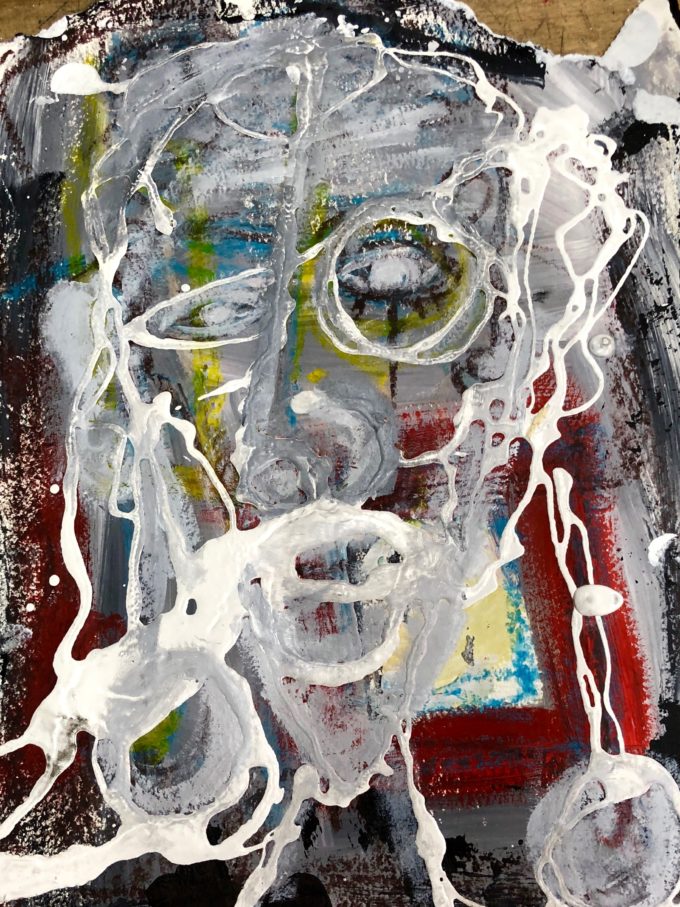Ty Stephano’s infectious raw aesthetic has recently made its way into a huge range of places — from the streets of NYC to the interiors of Lower East Side businesses to a variety of alternative spaces and established galleries. An interview with the self-taught, self-desribed “American fashion designer and contemporary artist” follows:
When did you begin to draw?
Since I can remember. As a young child, I was always sketching on newspapers, magazines — on any surface I could get my hands on! My teachers would get mad at me, as I would draw on every piece of paper that they had handed to me.
Yes! I notice you are sketching now! Have you any early art memories that stand out?
When I was in the second grade in Beacon, NY, one of my pieces was selected to be on exhibit at a nearby children’s museum.
What inspires you to keep creating art?
It’s my way of communicating. And I want to impact others, especially the youth.
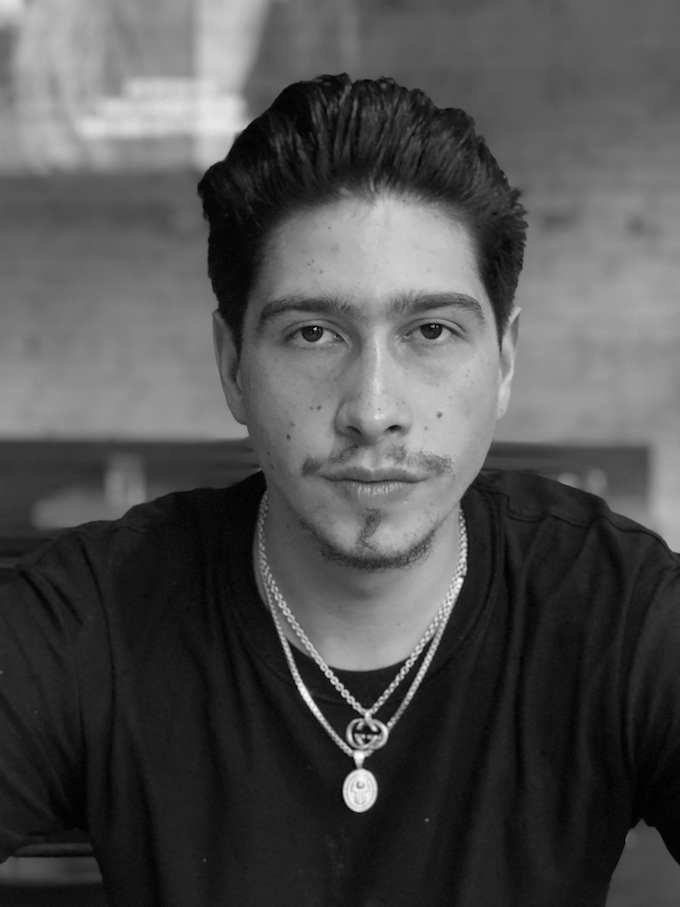
Who are some of your favorite artists?
Among them are: the contemporary American artist Jesse Hazelip and the late French artists Dubuffet and Matisse.
And cultural influences?
The underground — in all its aspects and forms.
And what about your particular raw aesthetic? Can you tell us something about it?
I often work with multiple layers — anywhere from 15-34 — simultaneously to attain the texture that I want. And within the texture are encrypttc messages signifying times and places or numbers. I like my pieces to feel “old.” And there is a message to all that I do, further reinforced by my splatters. Not everyone is perfect, but each one of us is unique.
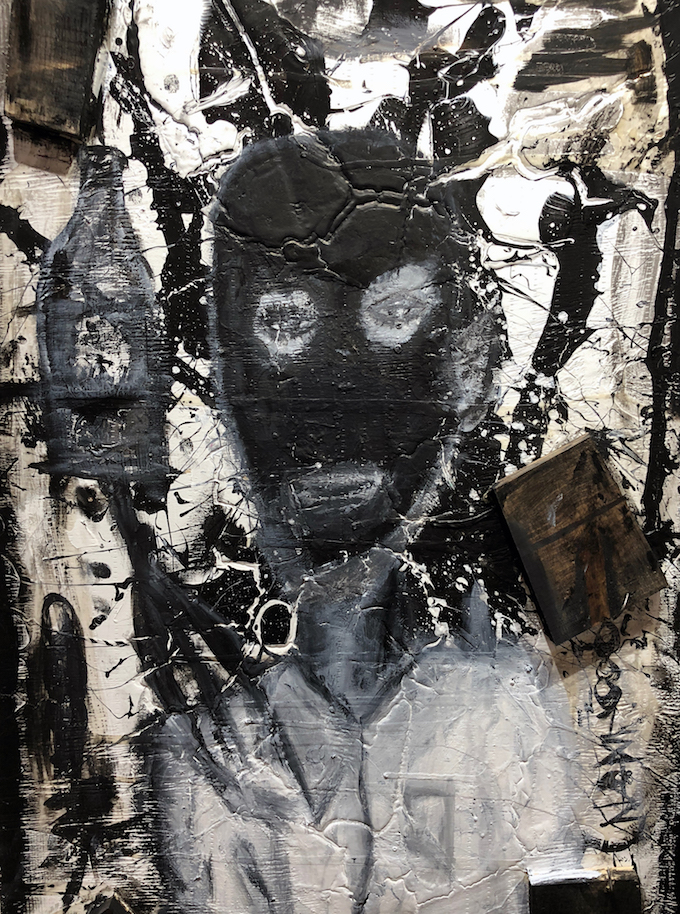
How long do you usually spend on a piece?
It varies. Some I do rather quickly. But I can often spend as long as four weeks — working three hours a day on a piece. And I spent six months on one of my recent pieces, working with oil and maximizing its texture.
Are you generally satisfied with your finished product?
I am!
Have you a favorite piece?
I particularly like my masked self-portrait. it represents the phoniness and misconceptions way too prevalent in society. it’s about seeing through the facades that people have created for themselves.
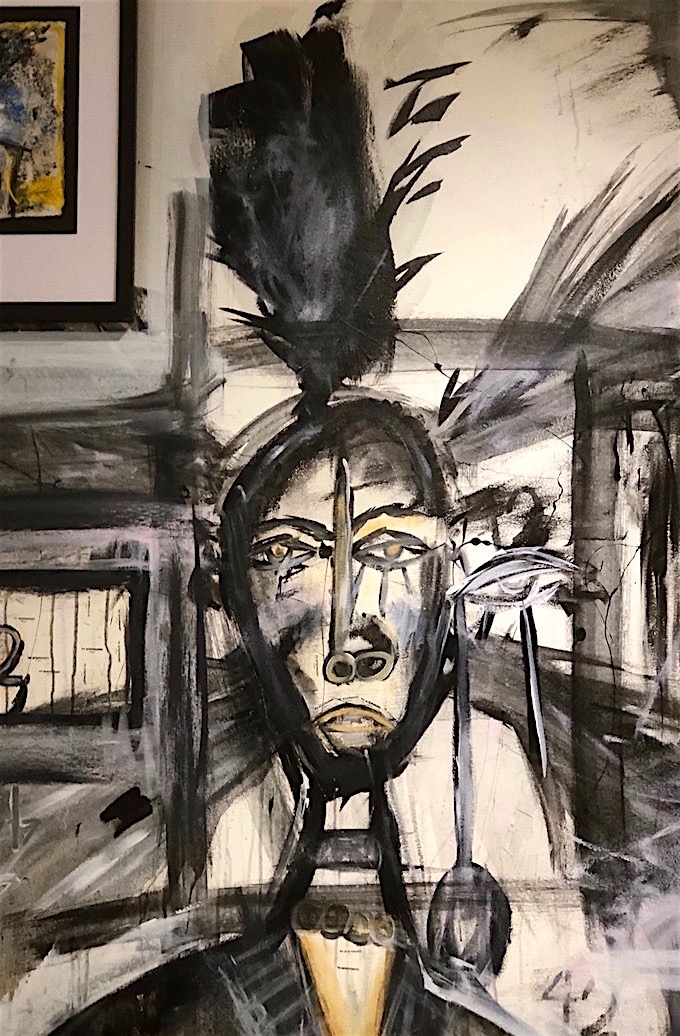
What percentage of your time is devoted to art?
My whole life is an art piece. I even dream about art.
What is your favorite setting to work?
A studio of all white walls overlooking a city — while listening to jazz, with palo santo burning.
What about favorite media?
I like mixed-media. I particularly like burning images and working with repurposed materials.

What other activities engage you?
Roaming the streets and looking for inspiration.
What is your main source of income?
My creations.
How does your family feel about what you are doing?
At first they didn’t like the madness of my of only living off my art, but now they accept it.
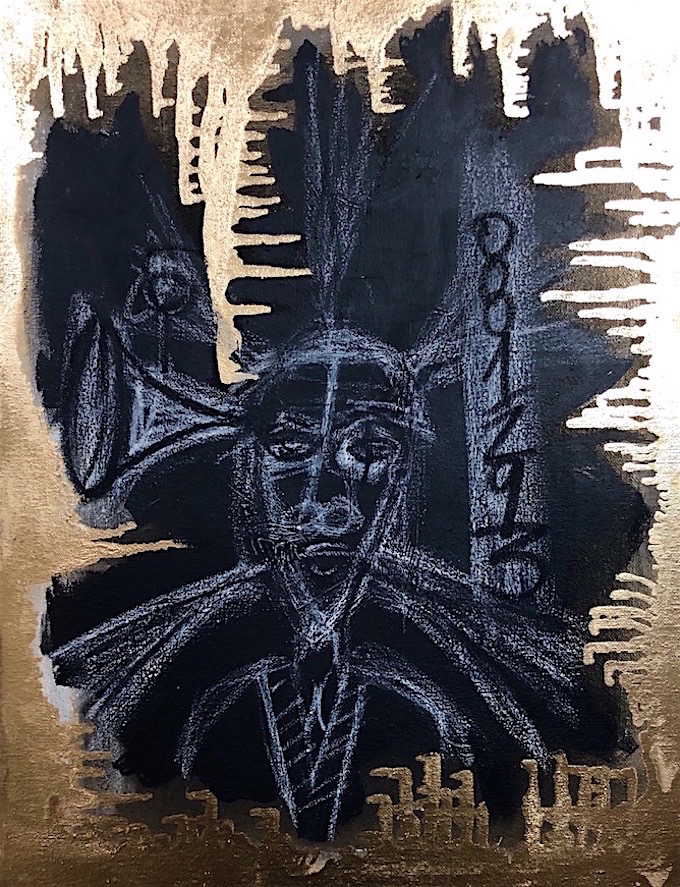
Where are you headed?
Everyone will know.
What do you see as the artist’s role in society?
To uplift people. To show them life from a different perspective. To spur them to think and question.
Interview conducted and edited by Lois Stavsky; photos by Lois Stavsky

